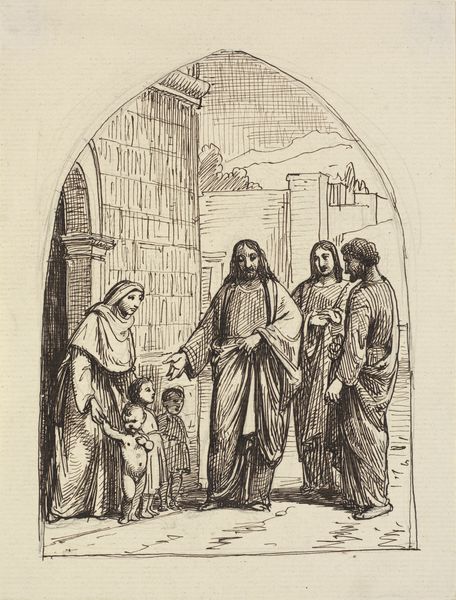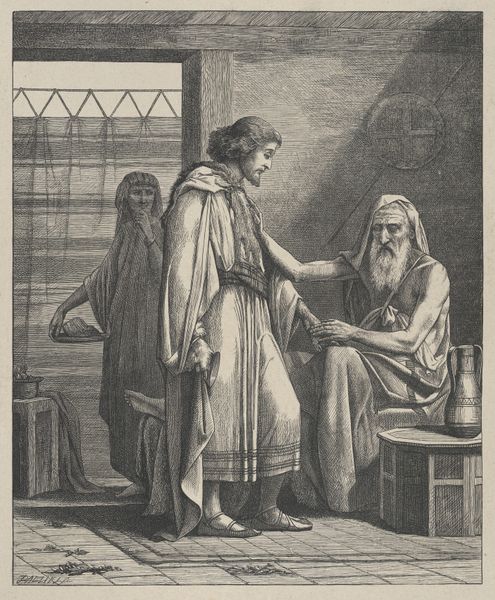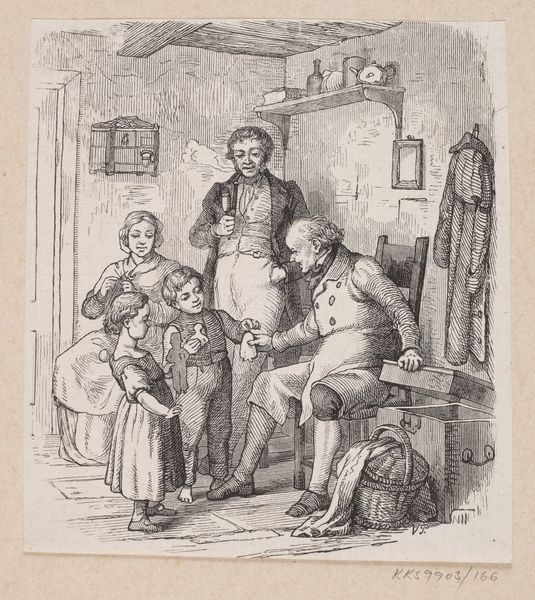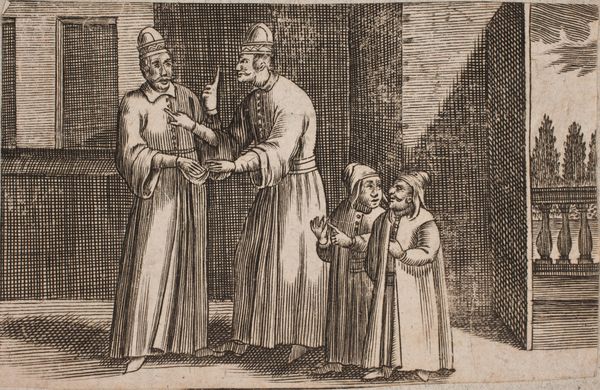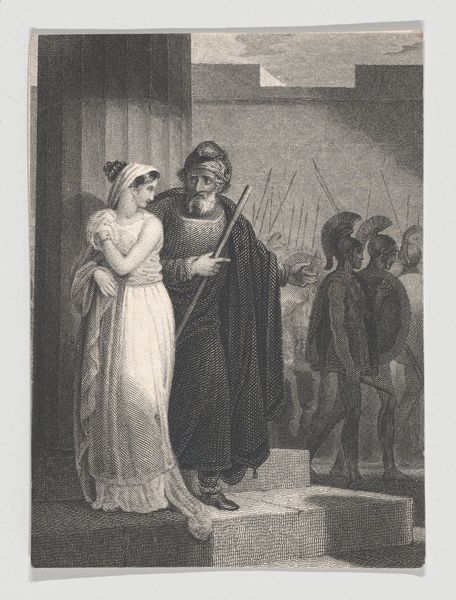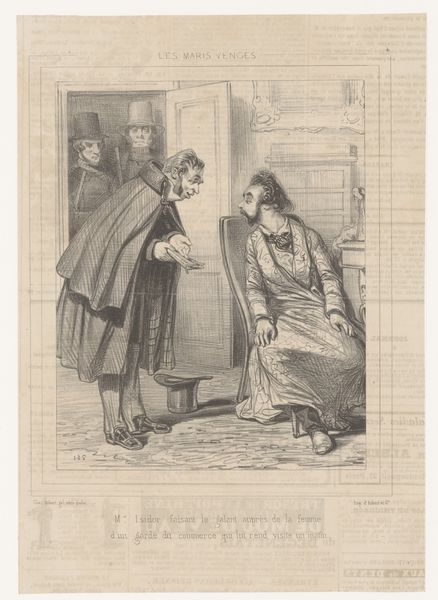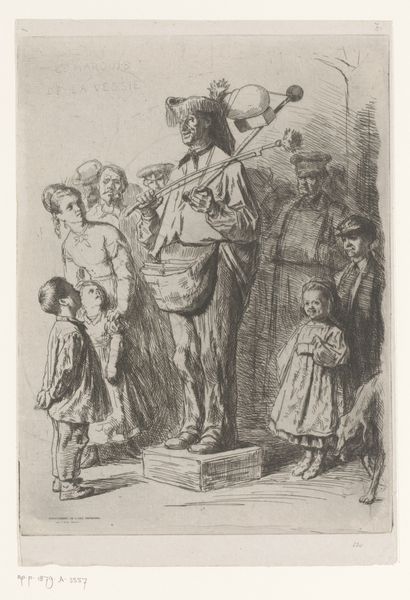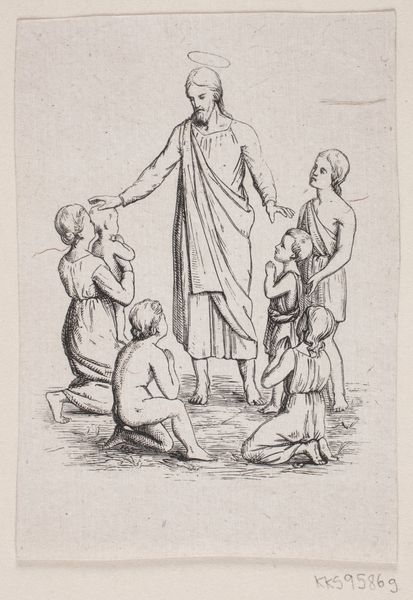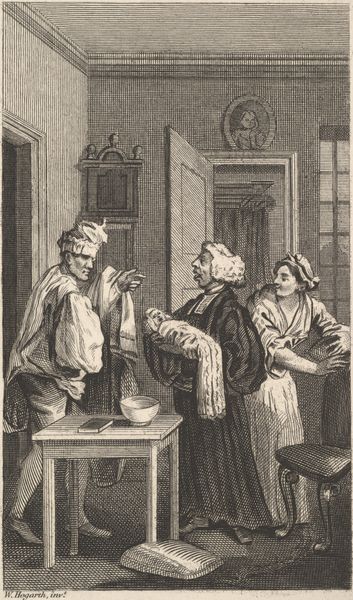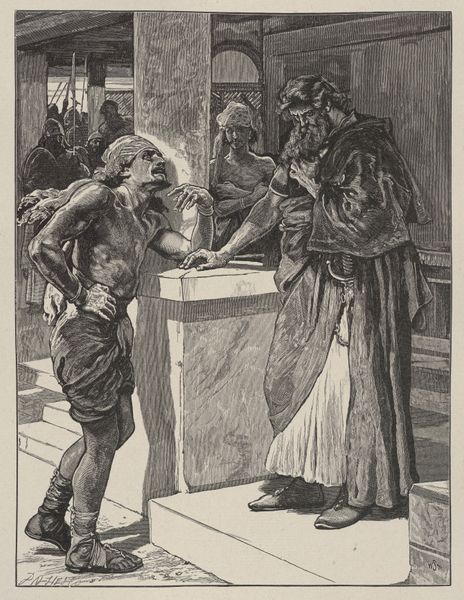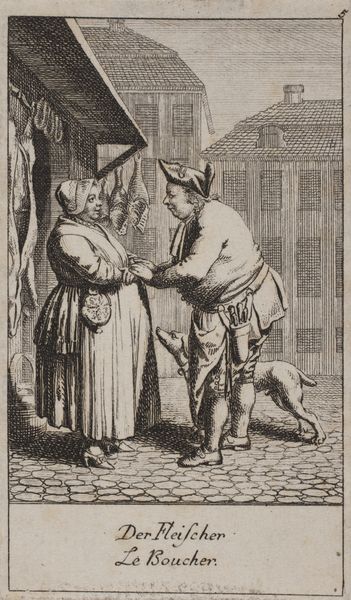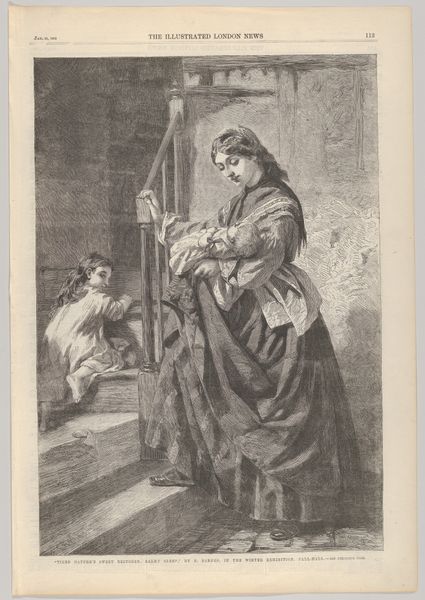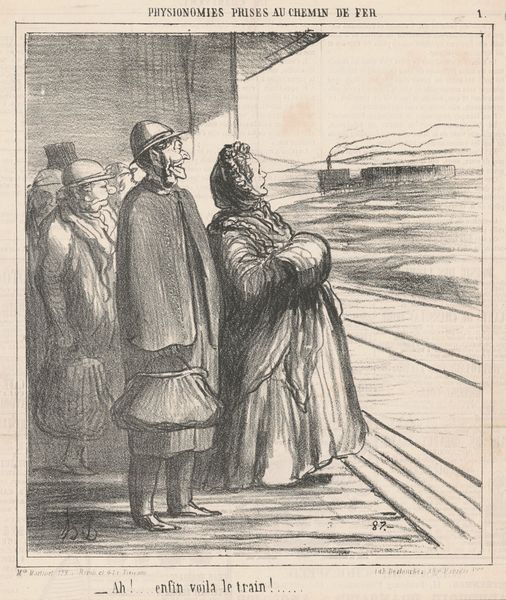
drawing, pen
#
drawing
#
pencil sketch
#
figuration
#
romanticism
#
pen
#
genre-painting
Dimensions: 241 mm (height) x 185 mm (width) (bladmaal)
Editor: So, this is Wilhelm Marstrand's "Hagar og Ismael forlader Abraham," created sometime between 1810 and 1873. It's a pen and pencil sketch. There's such a potent sense of departure here, a mix of sadness and resolution in their figures. How do you interpret this work within its historical context? Curator: Well, first, consider the social context: During this time, genre paintings depicting biblical narratives gained popularity, serving as moral instruction. Marstrand uses a romanticized style to depict Hagar and Ismael’s banishment, reflecting broader societal attitudes towards family and power structures of the time. How do the figures' gestures inform this interpretation? Editor: Abraham’s hand, gesturing away, definitely symbolizes rejection. Hagar’s stance seems almost defiant, though. Does that speak to a specific societal view, perhaps relating to women? Curator: Precisely. It potentially challenges patriarchal structures by depicting Hagar with a visible dignity. But how does the institution—specifically, its commission and display within an art museum—influence our understanding of the scene's politics? Editor: By being displayed in a museum, doesn’t it become more than just a religious or historical narrative? It's like the museum is validating it as an important story for public reflection. Curator: Exactly. It becomes part of the museum's narrative, which itself is shaped by political and cultural choices. This act of curatorial selection imparts significance beyond the artwork itself, contributing to public memory and value systems. Did this new perspective shift how you consider the artwork's narrative and institutional impact? Editor: Definitely! It makes me think about what stories are deemed worthy of preserving and how that reflects our current values, versus the time it was created. Thanks. Curator: And I learned the emotional language that drawings can tell us when reflecting a story within complex dynamics.
Comments
No comments
Be the first to comment and join the conversation on the ultimate creative platform.
